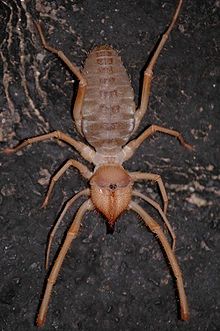
Ctenizidae is a small family of mygalomorph spiders that construct burrows with a cork-like trapdoor made of soil, vegetation, and silk. They may be called trapdoor spiders, as are other, similar species, such as those of the families Liphistiidae, Barychelidae, and Cyrtaucheniidae, and some species in the Idiopidae and Nemesiidae. The name comes from the distinctive behavior of the spiders to construct trapdoors, and ambush prey from beneath them.

Austin Roberts was a South African zoologist. He is best known for his Birds of South Africa, first published in 1940. He also studied the mammalian fauna of the region: his work The mammals of South Africa was published posthumously in 1951. The 7th edition of Roberts' Birds of Southern Africa which appeared in 2005, is the standard work on the region's birds.

Adam White was a Scottish zoologist.
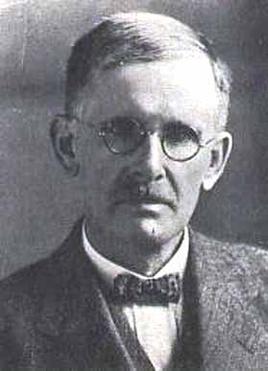
John Hewitt was a South African zoologist and archaeologist of British origin. He was born in Dronfield, Derbyshire, England, and died in Grahamstown, South Africa. He was the author of several herpetological papers which described new species. He also described new species of spiders and other arachnids.
Stasimopus mandelai is a species of spider in the family Stasimopidae from the Eastern Cape Province of South Africa. This species occurs syntopically with S. schoenlandi and a number of other mygalomorph spiders at the Great Fish River Nature Reserve. The species was named in 2004 by zoologists Brent Hendrixson and Jason Bond "honoring Nelson Mandela, the former president of South Africa and one of the great moral leaders of our time."

Keppel Harcourt Barnard was a South African zoologist and museum director. He was the only son of Harcourt George Barnard M.A. (Cantab.), a solicitor from Lambeth, and Anne Elizabeth Porter of Royston.
Ctenolophus is a genus of African armored trapdoor spiders that was first described by William Frederick Purcell in 1904. Originally placed with the Ctenizidae, it was moved to the Idiopidae in 1985.
Galeosoma is a genus of African armored trapdoor spiders that was first described by William Frederick Purcell in 1903.
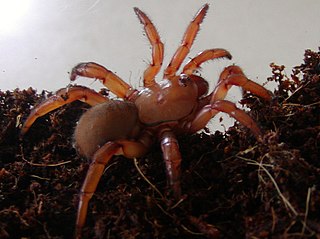
Gorgyrella is a genus of African armored trapdoor spiders that was first described by William Frederick Purcell in 1902.
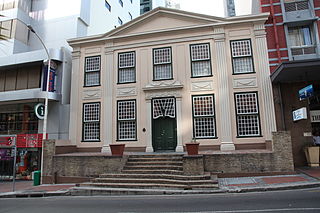
Koopmans-de Wet House is a former residence and current museum in Strand Street, Cape Town, South Africa. The house became part of the South African Museum in 1913 and was opened to the public on 10 March 1914. It was declared a National Monument under National Monuments Council legislation on 1 November 1940. It is the oldest house museum in South Africa.
Vivian Frederick Maynard FitzSimons, born in Pietermaritzburg, was a notable herpetologist in South Africa. Also, he contributed to the collection of spermatophyte samples for the National Herbarium which has become part of the South African National Biodiversity Institute at the Pretoria National Botanical Garden. In 1937, together with Anna Amelia Obermeyer, he collected some of the earliest plant specimens from the Eastern Highlands of Rhodesia.

Stasimopus is a genus of African mygalomorph spiders that was first described by Eugène Louis Simon in 1892. It is the only genus in the family Stasimopidae.
Homostola is a genus of African mygalomorph spiders in the family Bemmeridae. It was first described by Eugène Louis Simon in 1892. Originally placed with the Ctenizidae, it was transferred to the wafer trapdoor spiders in 1985, and to the Bemmeridae in 2020. It is a senior synonym of Stictogaster and Paromostola.
Hermacha is a genus of mygalomorphae spiders in the family Entypesidae. It was first described by Eugène Louis Simon in 1889. Originally placed with the Ctenizidae, it was transferred to the funnel-web trapdoor spiders in 1985, then to the Entypesidae in 2020. It is a senior synonym of Damarchodes and Hermachola.
Lepthercus is a genus of South African mygalomorph spiders in the family Entypesidae. It was first described by William Frederick Purcell in 1902. Originally placed with the Ctenizidae, it was transferred to the Nemesiidae in 1985, then to the Entypesidae in 2020.
Pionothele is a genus of African mygalomorph spiders in the family Pycnothelidae. It was first described by William Frederick Purcell in 1902. As of June 2020 it contains 2 species, found in Namibia and South Africa: P. gobabeb, and P. straminea. Originally placed with the Ctenizidae, it was transferred to the funnel-web trapdoor spiders in 1985, then to the Pycnothelidae in 2020.
Spiroctenus is a genus of African araneomorph spiders in the family Bemmeridae. It was first described by Eugène Louis Simon in 1889. Originally placed with the Ctenizidae, it was transferred to the funnel-web trapdoor spiders in 1985, and to the Bemmeridae in 2020. It is a senior synonym of Bemmeris, Bessia, and Ctenonemus.
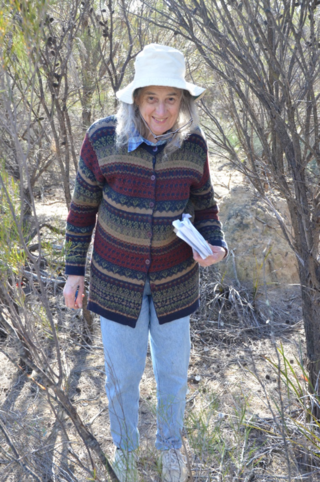
Barbara Anne York Main was an Australian arachnologist and adjunct professor at the University of Western Australia. The author of four books and over 90 research papers, Main is recognised for her prolific work in establishing taxonomy for arachnids, personally describing 34 species and seven new genera. The BBC and ABC produced a film about her work, Lady of the Spiders, in 1981.

Frederick Eyles was an English-born Rhodesian botanist, politician and journalist. The standard author abbreviation Eyles is used to indicate this person as the author when citing a botanical name.
Purcell's gecko is a species of lizard in the family Gekkonidae. The species is endemic to southern Africa.


